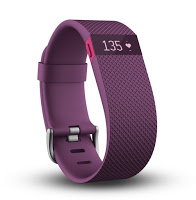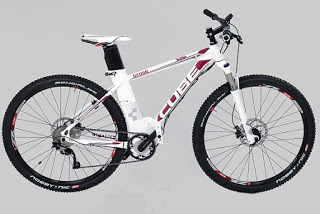In the effort to track calorie burn and activity, I have seen many patients coming in wearing a FitBit HR. So, I decided to get one myself to check it out.
I use a Garmin to track my heart rate during exercise, which requires a sometimes uncomfortable chest strap, so the idea of tracking my heart rate with my neat little FitBit HR wrist band was very appealing indeed.
Unfortunately, what I have found is very disappointing – for me, the FitBit is completely useless to track higher heart rates (and based on online reviews and even lawsuits in the US, I am not the only one).
When I am at rest, my FitBit HR measures my heart rate very well. Now, watch what happens when I put the pedal to the metal on my spin bike. Pictured below is my Garmin (white watch, left), measuring my heart rate via the chest strap; on the right is my FitBit HR.
***NOTE: Discuss with your doctor to find out what your appropriate target and/or maximum heart rate should be before embarking on an exercise program. ***
It was only after I had stopped my exercise and my heart rate came down into the 120s that the FitBitHR became accurate again:
For those who are wondering if the problem could be the Garmin, it’s not – I checked each of these heart rates manually against my own pulse, and the Garmin was accurate (though it too can be inaccurate, for example if you are in a cold environment and/or not sweating). I have also carried out this experiment with different activities, and yes, I have also tried moving the FitBit HR further up my wrist. The results are the same.
The reason for the inaccuracy comes from the technology used to monitor HR. While the Garmin strap uses electrical activity from the heart measured via the chest strap, the FitBit HR use optical technology to measure heart rate. This involves using a LED light to illuminate your capillaries (tiny blood vessels) as blood runs past. Capillary blood flow isn’t as distinctly pulsatile as the bigger blood vessels (arteries), and at higher heart rates, it may be very difficult for this technology to distinguish higher heart rates. I have not tested any of the other wrist devices using optical technology out there, but I suspect they may be at risk of similar inaccuracies.
What I do like about my FitBit HR is the sleep tracker, and the pedometer (step counter) – though both of these features have their limitations as well.
Thus, please exercise caution in your interpretation of your FitBit HR data – your heart rate, particularly during activity, may be highly inaccurate.
***NOTE: Before starting any moderate or vigorous exercise program, be sure to speak with your doctor.***
Thanks so much to Ryan, Jacqueline, and friends for the fabulous discussion that led to this blog post.












